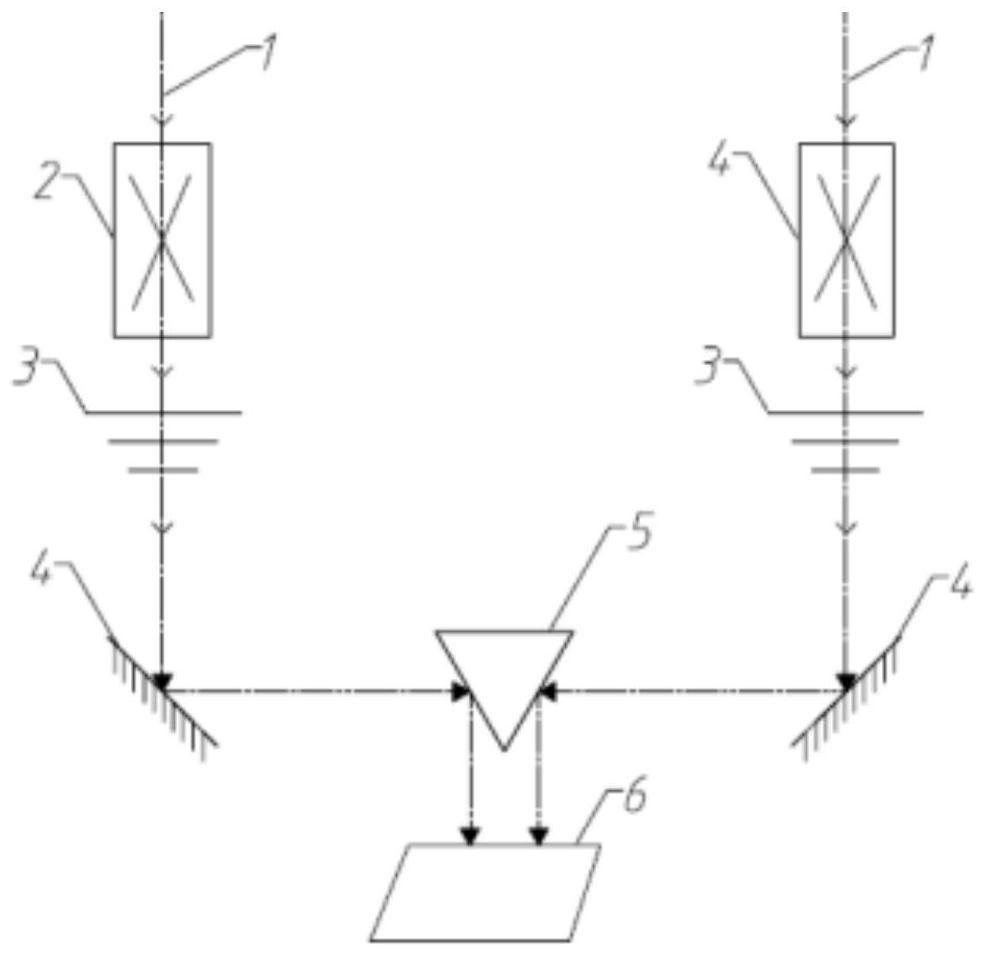Single-sensor synchronous exposure structure for binocular uncooled thermal infrared camera
A single-sensor, non-cooling technology, used in instruments, scientific instruments, optical radiation measurement, etc., can solve problems such as difficulty in meeting the needs of product popularization, increasing the overall cost of binocular cameras, increasing system design costs, and using stability.
- Summary
- Abstract
- Description
- Claims
- Application Information
AI Technical Summary
Problems solved by technology
Method used
Image
Examples
Embodiment
[0024] like figure 1 As shown, the single-sensor synchronous exposure structure for a binocular uncooled thermal infrared camera includes an optical path turning prism 5 , a reflector 4 and a light sensor 6 .
[0025] Both light incident ends of the binocular camera are provided with reflectors 4;
[0026] Each reflector 4 is used to reflect the incident light 1 to the light path turning prism 5;
[0027] The optical path turning prism 5 is used to refract the light obtained from each mirror 4 to the optical sensor or the optical sensor 6 with its own optical lens group.
[0028] The present invention obtains optical signals through two separate reflectors 4, and then refracts the collected optical signals to the optical sensor 6 through the optical path turning prism 5, and finally exposes them to different areas of the same optical sensor to obtain the respective binocular lenses at the same time. Signal.
[0029] In some embodiments, a pair of reflecting mirrors 4 are sy...
PUM
| Property | Measurement | Unit |
|---|---|---|
| Wavelength | aaaaa | aaaaa |
Abstract
Description
Claims
Application Information
 Login to View More
Login to View More - R&D
- Intellectual Property
- Life Sciences
- Materials
- Tech Scout
- Unparalleled Data Quality
- Higher Quality Content
- 60% Fewer Hallucinations
Browse by: Latest US Patents, China's latest patents, Technical Efficacy Thesaurus, Application Domain, Technology Topic, Popular Technical Reports.
© 2025 PatSnap. All rights reserved.Legal|Privacy policy|Modern Slavery Act Transparency Statement|Sitemap|About US| Contact US: help@patsnap.com

